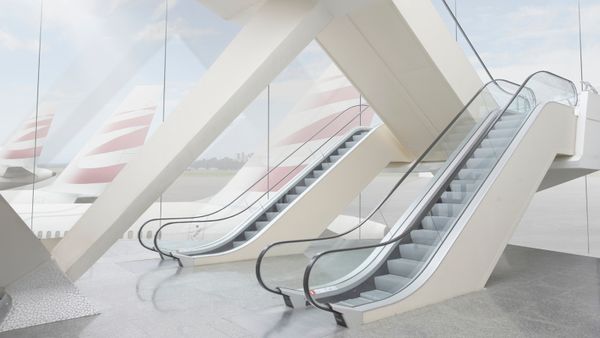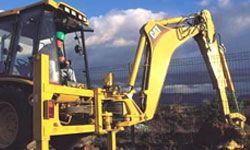Making the Rounds
Many modern elevators are controlled by a computer. The computer's job is to process all of the relevant information about the elevator and turn the motor the correct amount to put the elevator car where it needs to be. In order to do this, the computer needs to know at least three things.
- Where people want to go
- Where each floor is
- Where the elevator car is
Finding out where people want to go is very easy. The buttons in the elevator car and the buttons on each floor are all wired to the computer. When you press one of these buttons, the computer logs this request.
Advertisement
There are lots of ways to figure out where the elevator car is. In one common system, a light sensor or magnetic sensor on the side of the car reads a series of holes on a long vertical tape in the shaft. By counting the holes speeding by, the computer knows exactly where the car is in the shaft. The computer varies the motor speed so that the car slows down gradually as it reaches each floor. This keeps the ride smooth for the passengers.
In a building with many floors, the computer has to have some sort of strategy to keep the cars running as efficiently as possible. In older systems, the strategy is to avoid reversing the elevator's direction. That is, an elevator car will keep moving up as long as there are people on the floors above that want to go up. The car will only answer "down calls" after it has taken care of all the "up calls." But once it starts down, it won't pick up anybody who wants to go up until there are no more down calls on lower floors. This program does a pretty good job of getting everybody to their floor as fast as possible, but it is highly inflexible.
More advanced programs take passenger traffic patterns into account. They know which floors have the highest demand, at what time of day, and direct the elevator cars accordingly. In a multiple car system, the elevator will direct individual cars based on the location of other cars.
In one cutting-edge system, the elevator lobby works like a train station. Instead of simply pressing up or down, people waiting for an elevator can enter a request for a specific floor. Based on the location and course of all the cars, the computer tells the passengers which car will get them to their destinations the fastest.
Most systems also have a load sensor in the car floor. The load sensor tells the computer how full the car is. If the car is near capacity, the computer won't make any more pick-up stops until some people have gotten off. Load sensors are also a good safety feature. If the car is overloaded, the computer will not close the doors until some of the weight is removed.
In the next section, we'll look at one of the coolest components in an elevator: the automatic doors.


